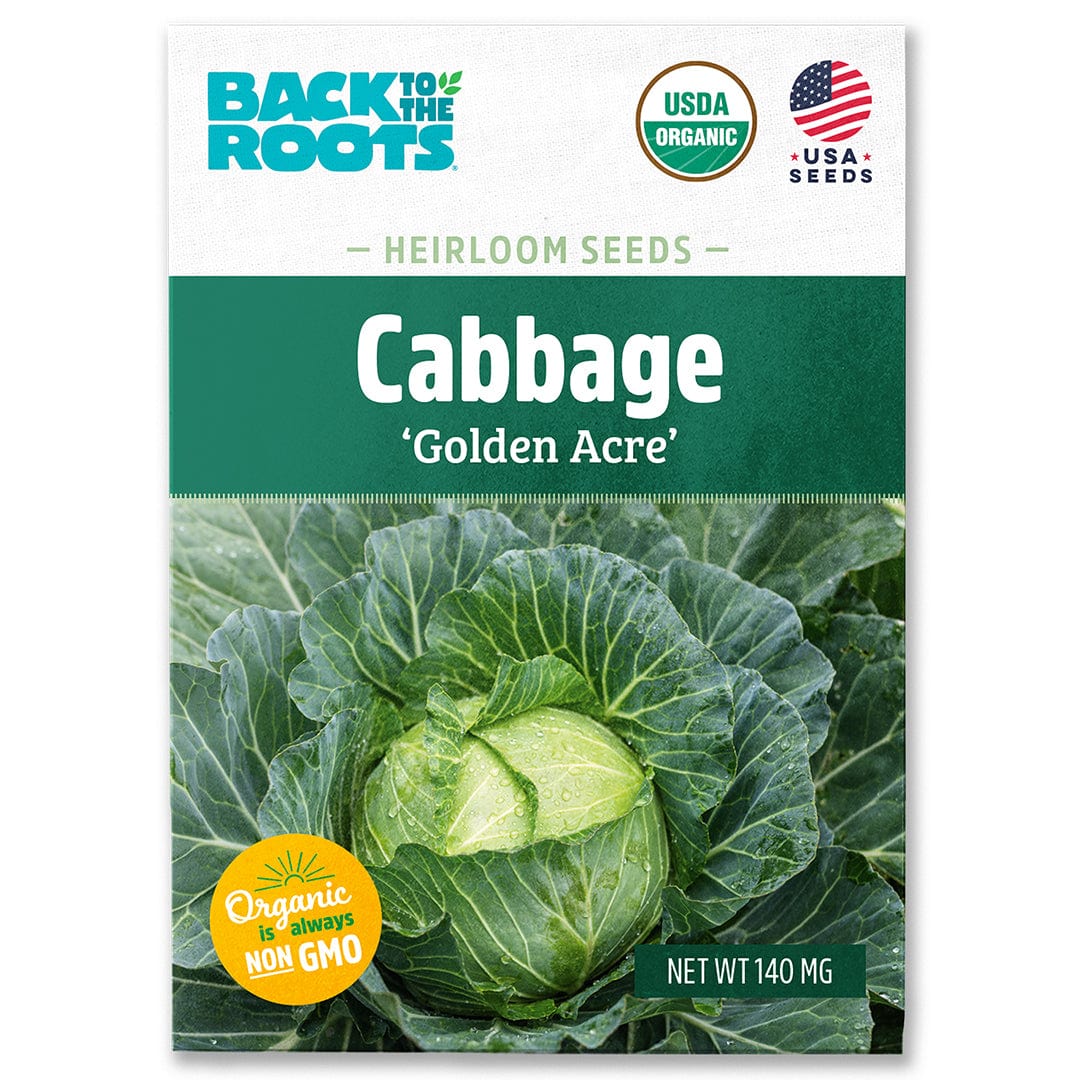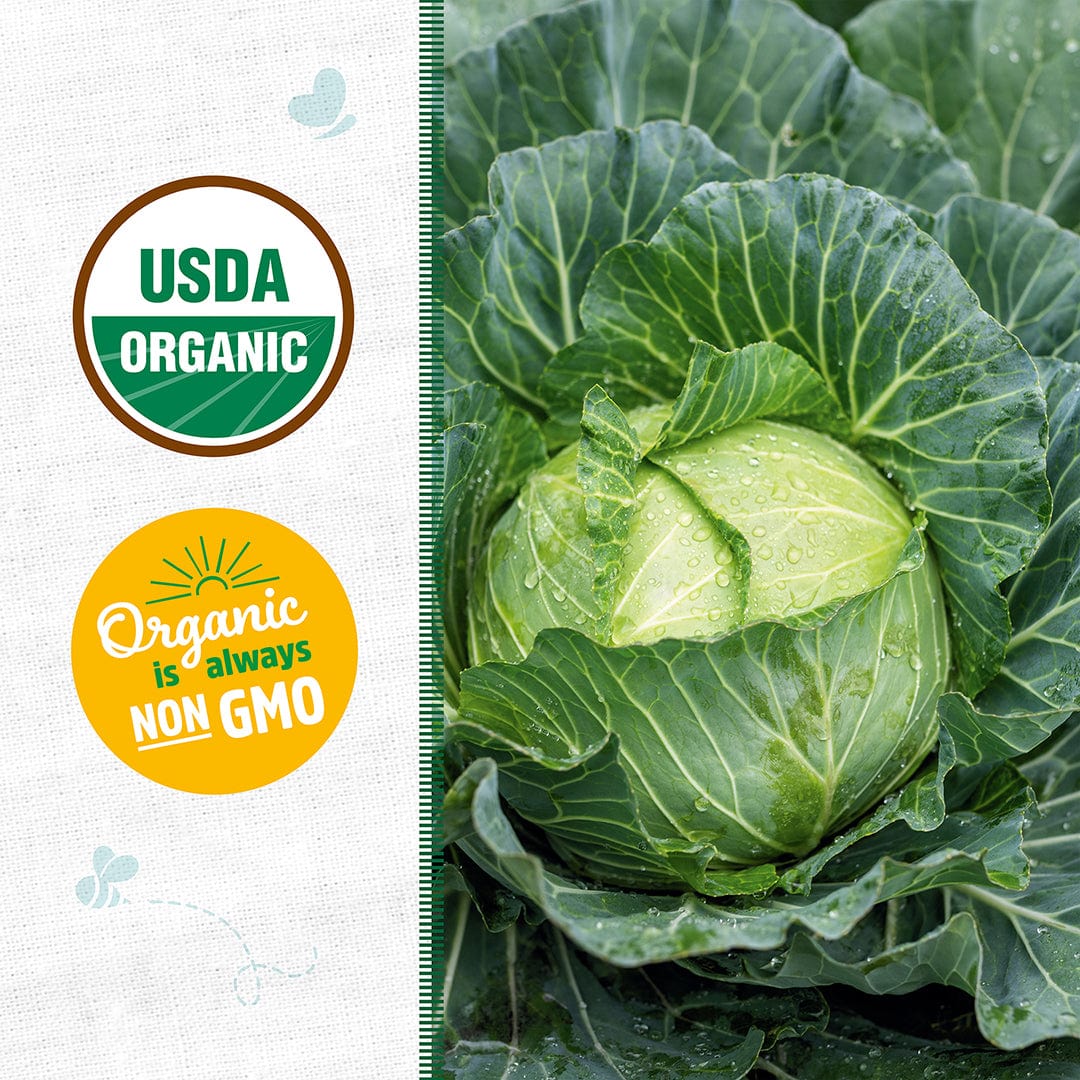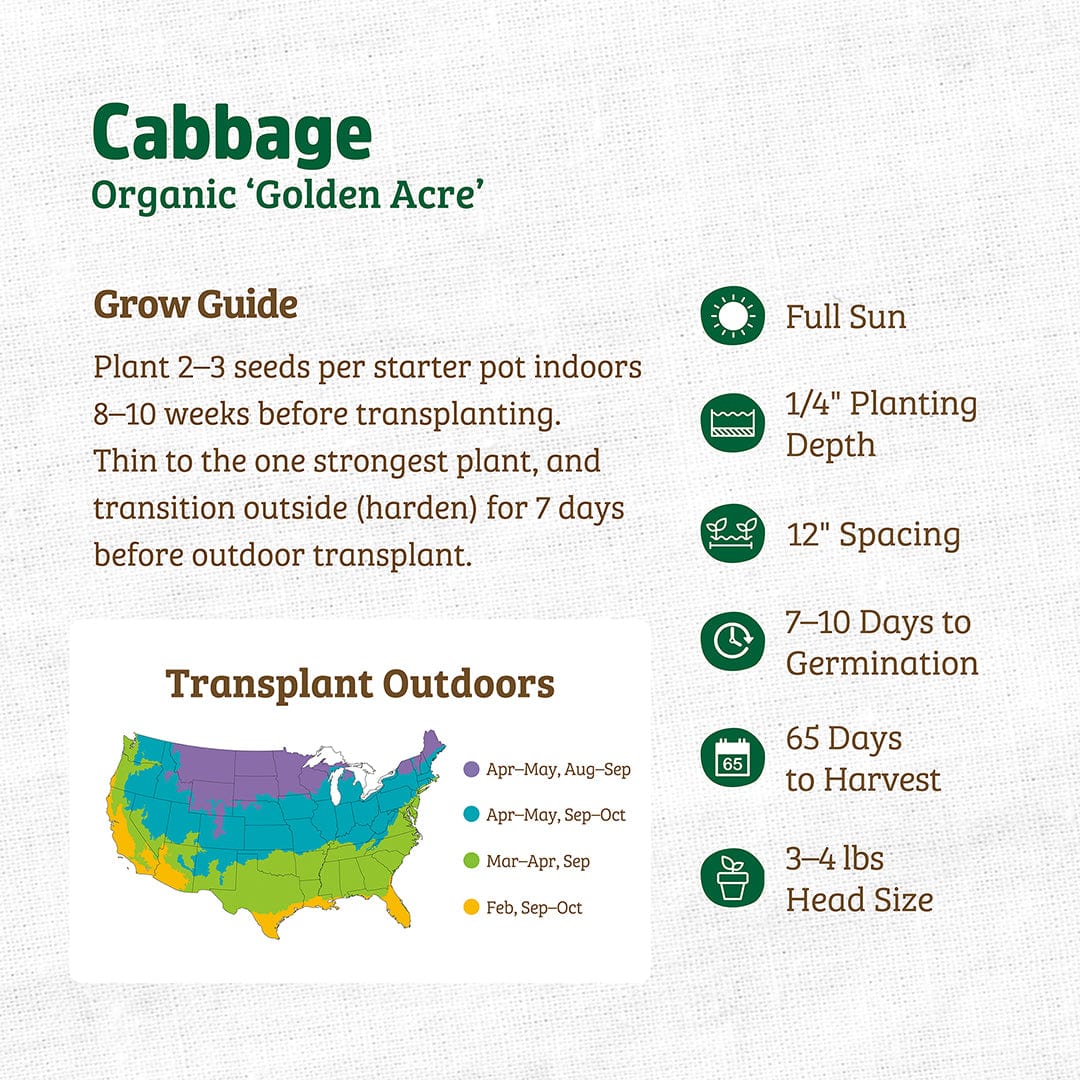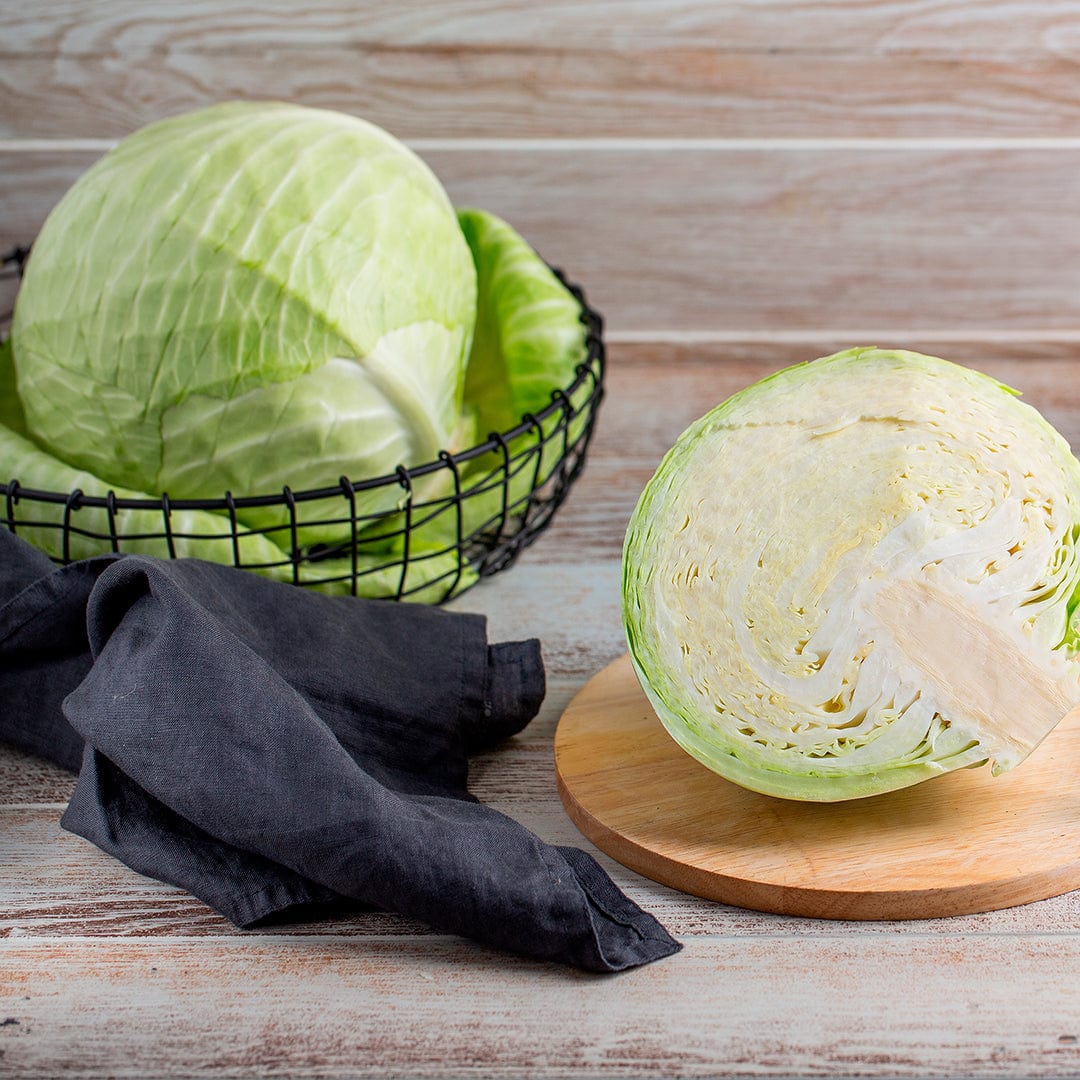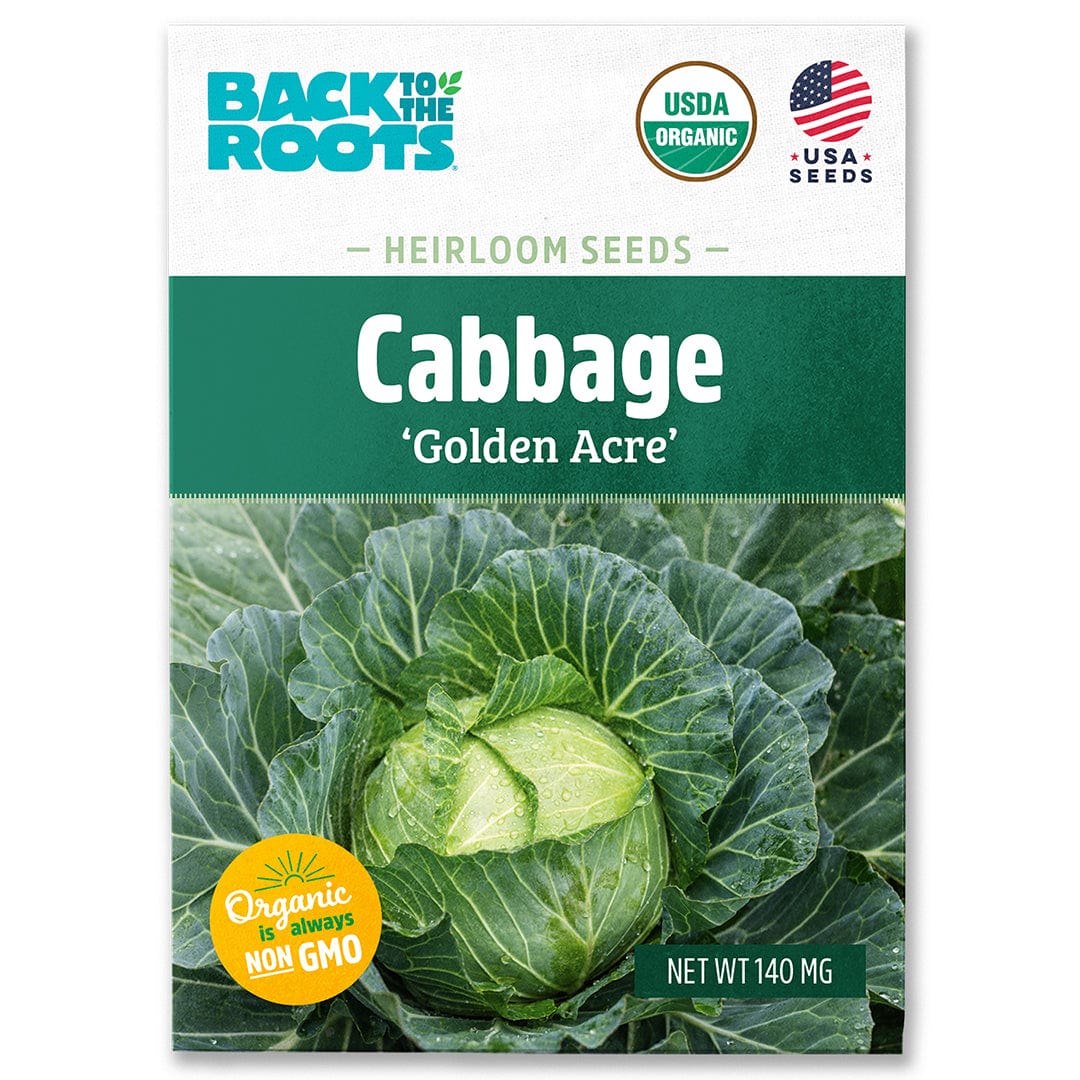
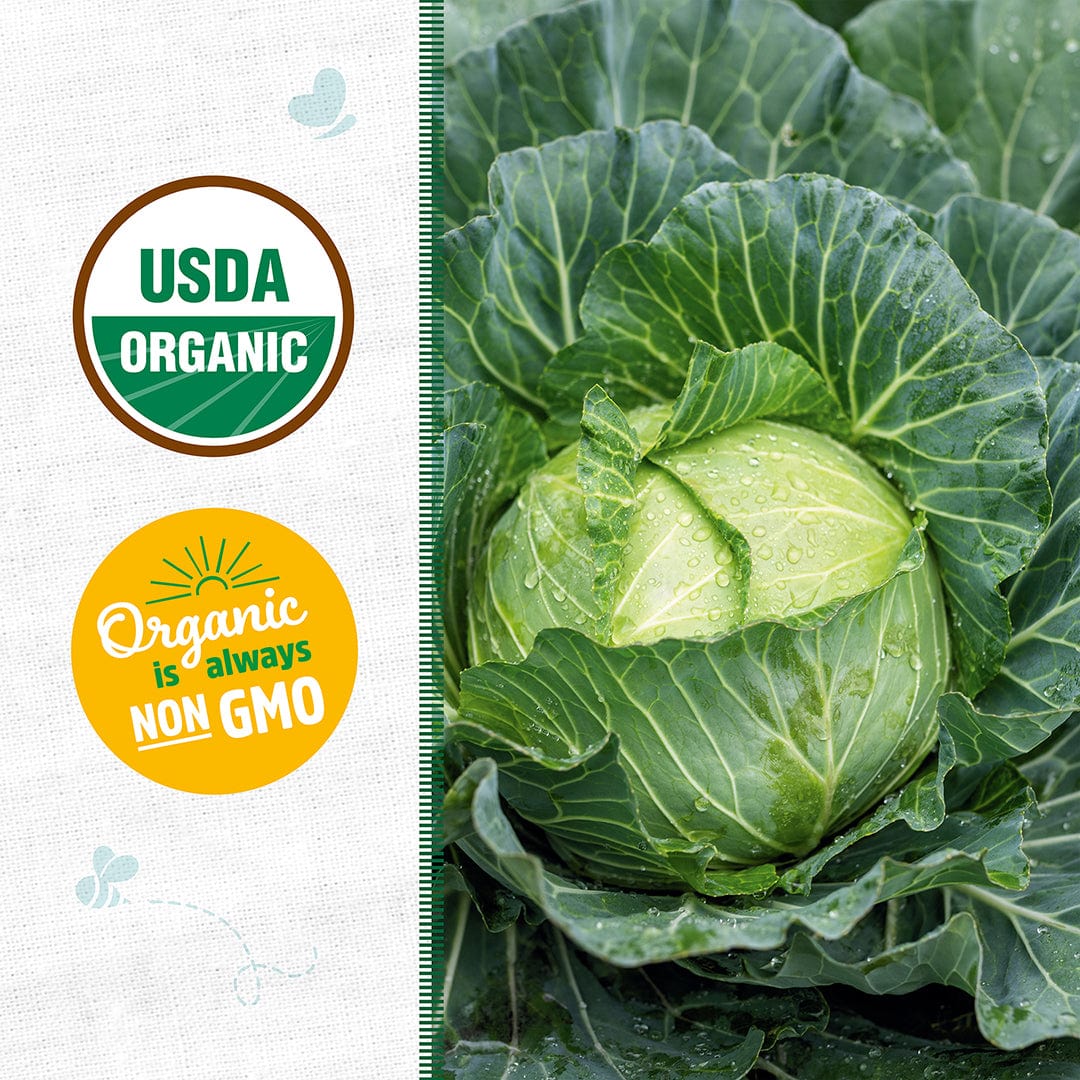
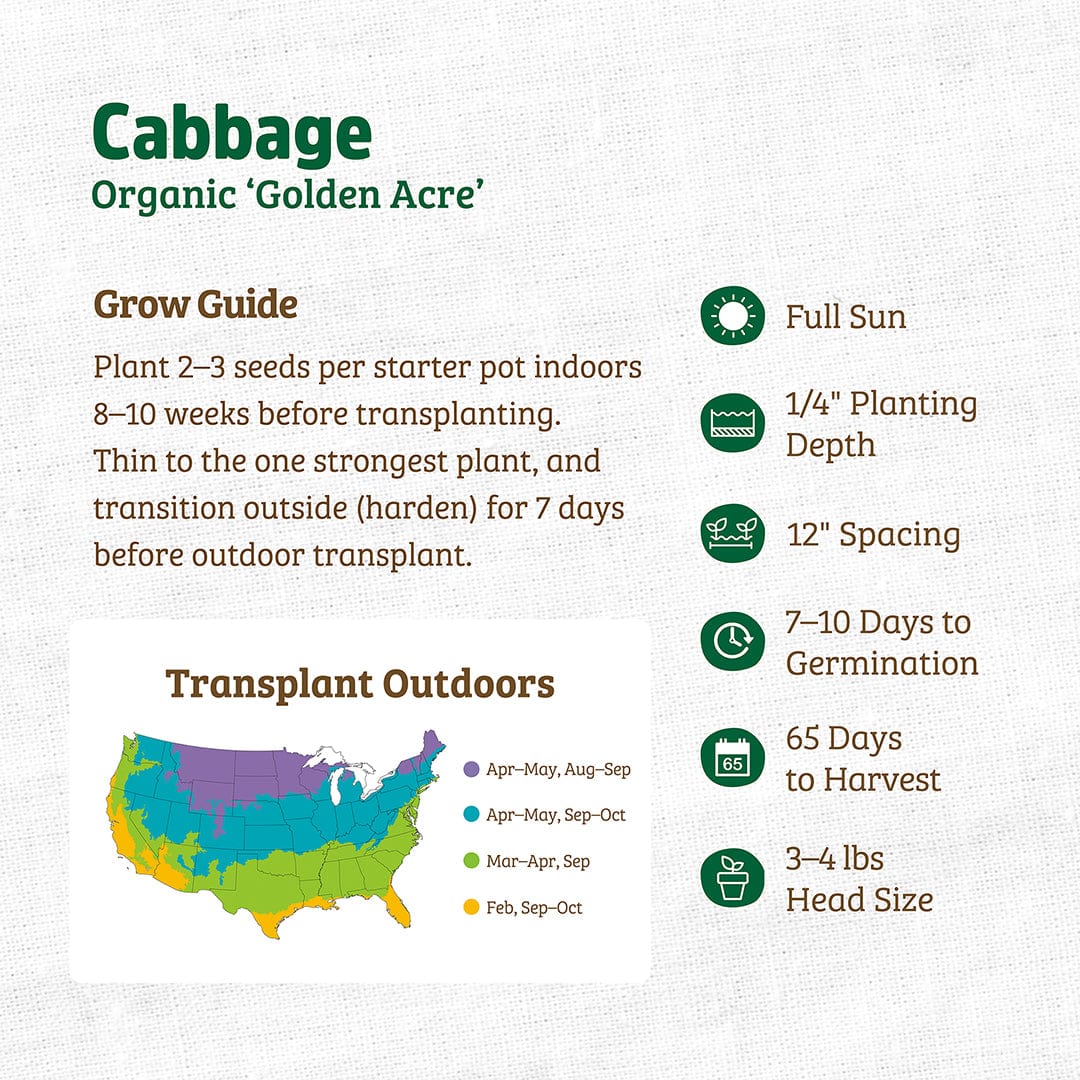



Organic Cabbage Seeds — 'Golden Acre'
Overview
A staple crop of northern peoples for many centuries, Cabbage is wonderful in coleslaws, salads, stir fries and sauerkraut. Cabbage is high in vitamin C and several disease-preventing phytochemicals.
Conditions
For soil, use a fertile well-draining potting mix that’s tailored for vegetables. For the best quality leaves, provide full sun (6 or more hours of direct sunlight). Cabbage prefers cooler conditions for optimal growth (55-75°F), so plan to grow in early spring or fall/winter.
Planting
Use our grow calendar tool to find specific dates for your region! Seeds germinate in 7-10 days.
Our cabbage varieties can be planted directly in the ground or started indoors and then transplanted to the garden. For planting outdoors, Sow 3-4 seeds 12" apart, 1/2" deep, and thin to one plant in each group after seedlings have sprouted. For transplanting, Plant indoors in starter pots or trays ~4–6 weeks before the desired transplant date. Transition outside (harden) for 7 days before outdoor transplant. Space at least 12” apart for full-sized heads.
Care
Avoid large changes in growing conditions (amount of water, temperature swings), as this can cause the cabbage heads to split at maturity. If large changes do occur, use a trowel or shovel to carefully dig near the plant to partially sever its root system. This slows the plant’s growth.
Cabbage requires a lot of nutrients from its soil, and it can quickly deplete the soil of nutrients. Prepare the soil in advance by mixing in additional organic matter (manure, compost, etc.).
Soil should be well-draining: roots that stand in water cause heads to rot.
Harvest
To harvest, cut each cabbage head at its base with a sharp knife. After harvesting, remove the entire stem and root system from the soil. Remove any yellow leaves (retain loose green leaves; they provide protection in storage) and immediately bring the head indoors or place it in shade.
To get two crops, cut the cabbage head out of the plant, leaving the outer leaves and roots in the garden. The plant will send up new heads; pinch off those until only four or so smaller heads remain. Harvest when tennis ball-size (perfect for salads!).
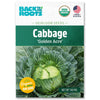
Organic Cabbage Seeds — 'Golden Acre'

